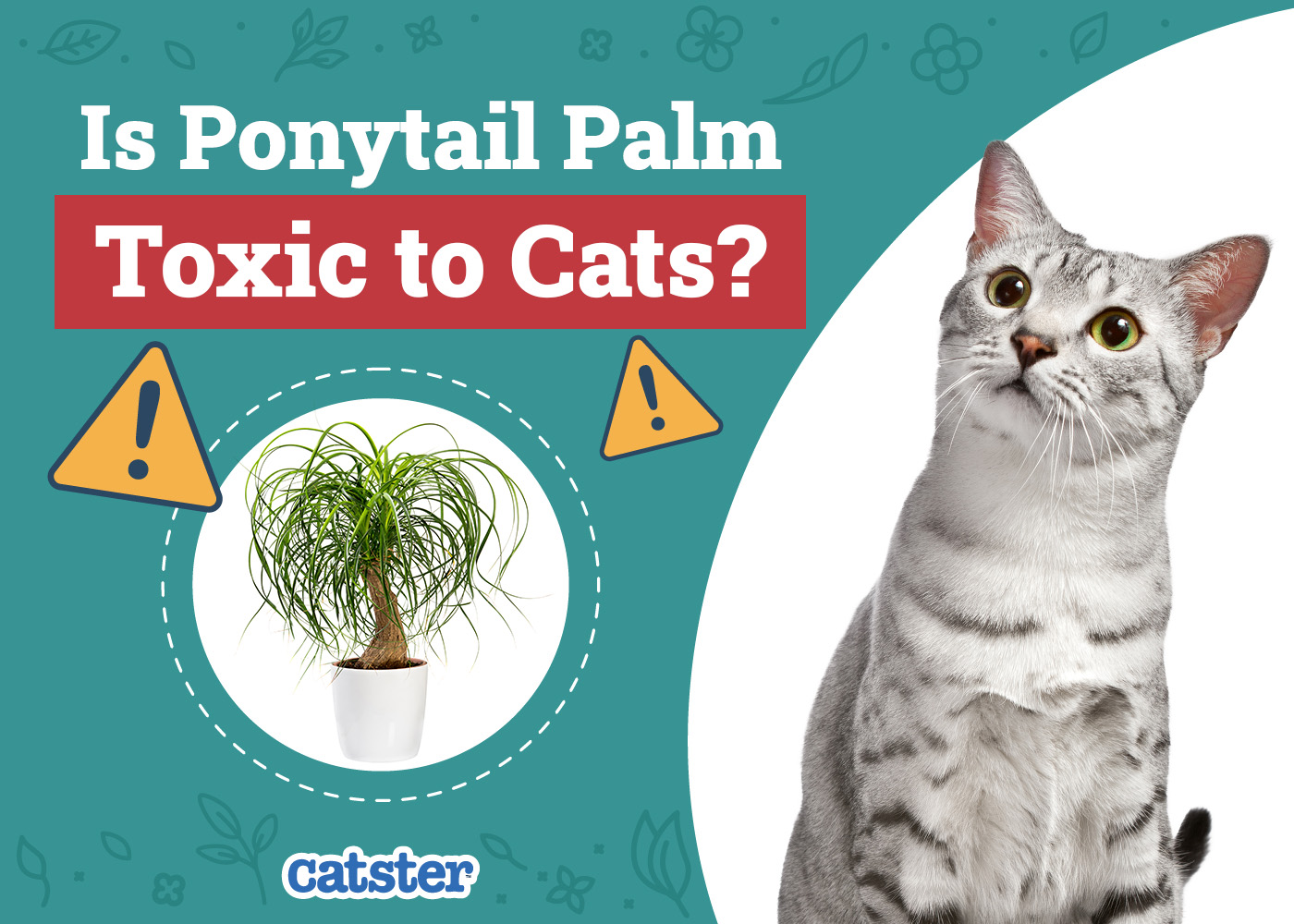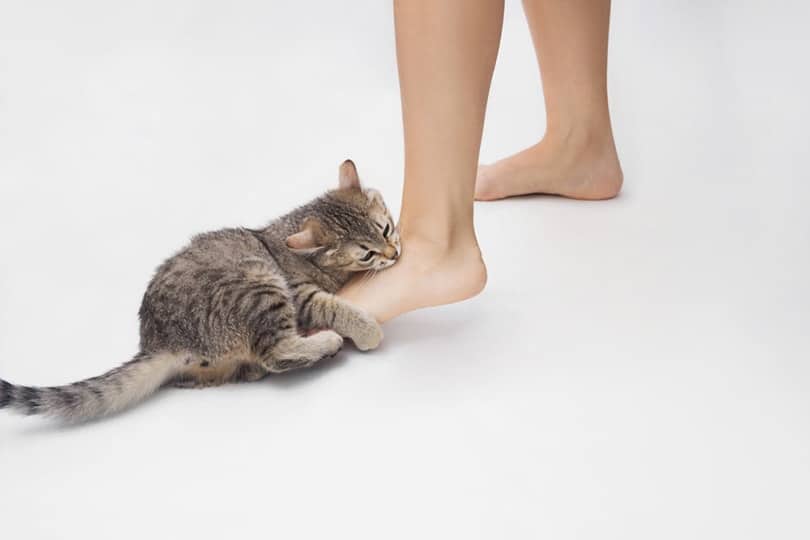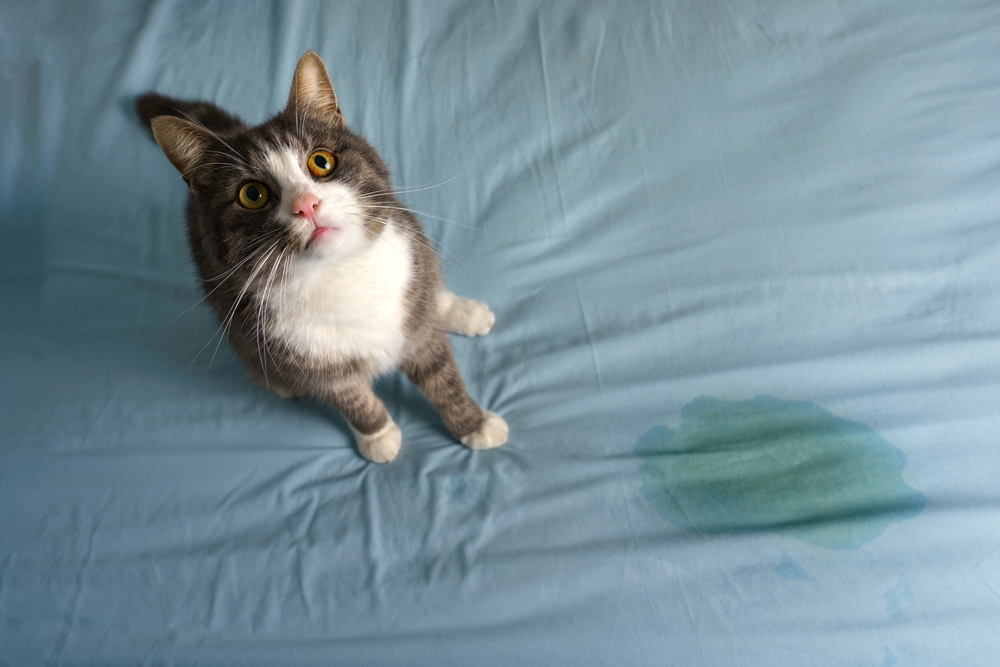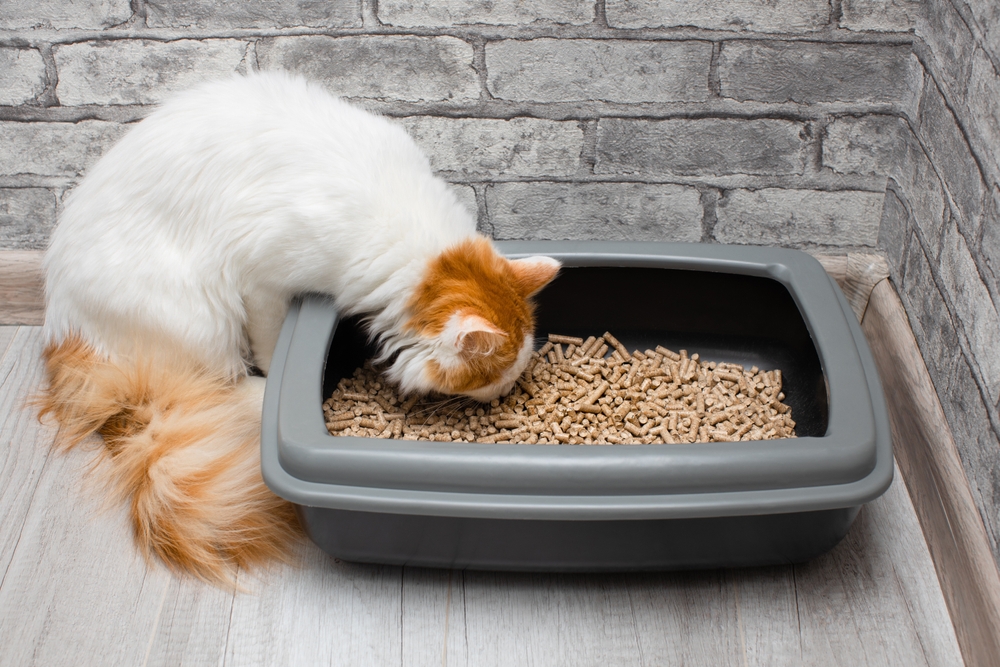With its plump, robust trunk that’s wider at the bottom and long, narrow leaves, the ponytail palm is an eye-catching plant that can reach heights up to 3 feet indoors. If you have a cat and wonder if the ponytail palm is toxic to cats, you should know that this plant is one of the many cat-friendly houseplants to grow.
While the ponytail palm isn’t toxic to cats, your cat could use the plant’s thick trunk to sharpen their claws, so keep an eye on them. And, of course, as a curious creature that likes to taste new and interesting things, it’s possible that your cat will take a nibble from the long leaves of your ponytail palm to see what it tastes like. But don’t worry if they do because the worst that can happen is that your kitty gets an upset stomach.

Other Houseplants Safe for Cats
If you’re a plant lover that would enjoy filling your home with houseplants, we’ve put together the following list of cat-safe plants you can grow without worry. Don’t think twice about keeping the following plants in your home because they’re all non-toxic to cats:
- Boston fern
- Bromeliad
- Haworthia
- African violets
- Baby rubber plant
- Areca palm
- Prayer plant
- Parlor palm
- Christmas cactus
- Wax plant
- Swedish Ivy
If you’re unsure if a houseplant you like is safe for your cat, visit the American Society for the Prevention of Cruelty to Animals (ASPCA) website. This trustworthy source offers a comprehensive list of both toxic and non-toxic houseplants.
Tips for Keeping Your Cat Away From Your Houseplants

Living with a cat is always interesting as cats are inquisitive and playful. But if your cat has its sights set on your houseplants, that cute behavior isn’t so charming.
If you’re not ready to sacrifice your houseplants to your cat or are simply tired of dealing with mauled plants your cat has chewed on or scratched, here are some ways you can keep them off your plants:
- Make Them Unappealing: Cats hate the smell and taste of citrus. Therefore, it makes sense to mix lemon, lime, or orange juice with a bit of water and spray it on the leaves to keep your cat away. You can also buy a non-toxic spray repellent to spray on your plant’s pots that will keep your cat away.
- Put Your Plants Out of Reach of Your Cat: A good way to protect your plants from your cat is to place them somewhere they can’t reach. Either hang your plants or place them on a high shelf that you’re confident your cat can’t jump on.
You can also get a bit creative by using an inexpensive aquarium as a planter or a large, domed birdcage. Try to think outside the box so you can come up with other ways to make your plants inaccessible to your feline friend.
- Give Your Cat Their Own Plant: Cats love cat grass, so consider growing some and placing it in a place that’s accessible to them. If you don’t have a green thumb, purchase an organic grass grow kit that only requires some water to get the grass growing in just a few days. Not only will this help keep your cat away from your houseplants, but it will also enrich their diet with added nutrients and fiber.
- Train Your Cat to Stay Away From Your Plants: It’s possible to train your cat to stay away from your houseplants, even though it will take time, patience, and consistency. When you see your cat getting close to a houseplant, tell them “no,” and if necessary, pick them up and move them to another location.

Conclusion
Ponytail palms can live in perfect harmony with cats as these beautiful houseplants are non-toxic to cats. Fortunately, there are many other houseplants you can keep inside your home when you’re sharing it with a cat that are completely safe for cats to be around.
If you’re unsure if a houseplant is cat friendly, check the ASPCA’s website or speak to your vet. Always remember that your cat depends on you to keep them healthy and safe, so don’t take any chances!
Featured Image Credit: Alexas_Fotos, Pixabay









